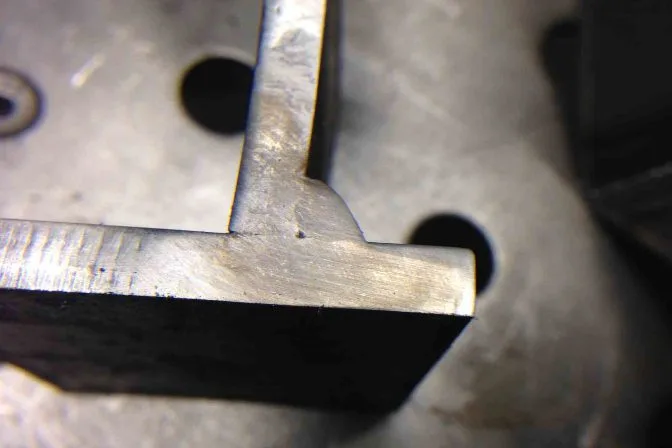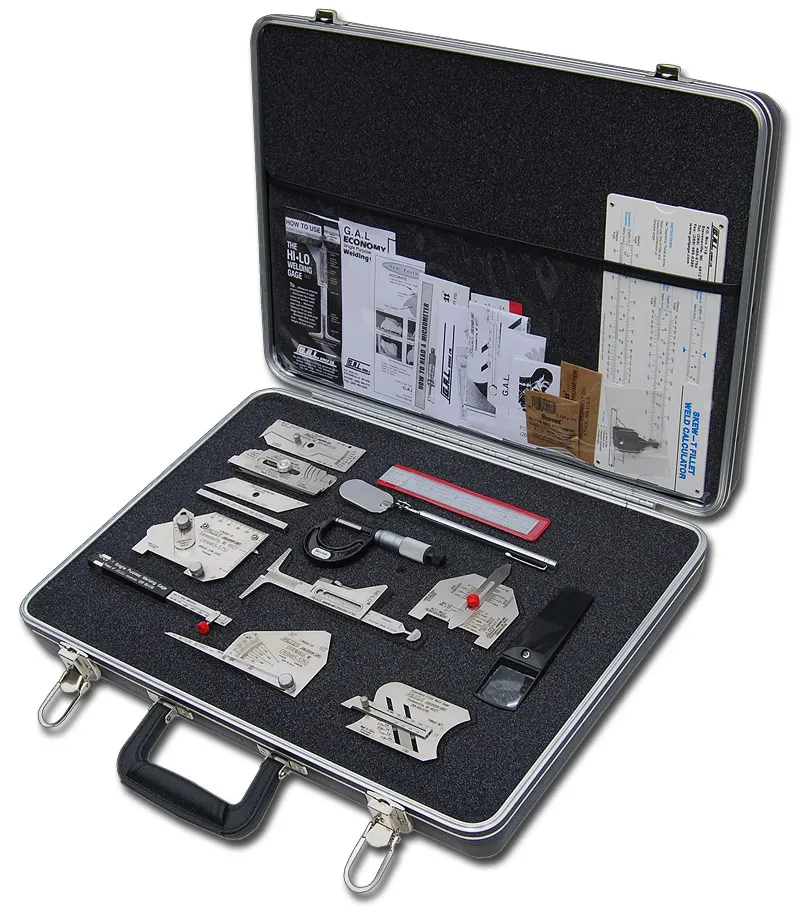A Comprehensive Guide to Welding Inspection: Recognizing Specifications, Techniques, and Finest Practices for Quality Control
Welding assessment plays a crucial function in ensuring the architectural stability and safety and security of welded parts, demanding an extensive understanding of market standards such as those developed by AWS and ASME. Numerous assessment methods, consisting of ultrasonic and aesthetic screening, are used to detect possible issues that might jeopardize high quality. Executing ideal practices can considerably improve functional dependability and foster trust fund among clients. As we check out these crucial aspects, it comes to be obvious that the implications of welding inspection extend much past conformity, welcoming a more detailed examination of exactly how these processes form market standards and practices.
Significance of Welding Inspection
Welding assessment plays a crucial function in making certain the integrity and security of welded structures. It is a necessary procedure that confirms that welds conform to predefined specifications, which is important in numerous markets, including construction, vehicle, and aerospace. By conducting thorough examinations, possible issues such as splits, incomplete blend, and porosity can be recognized early, preventing devastating failings that could bring about mishaps or expensive repair services.
The significance of welding examination extends past mere compliance with regulations; it also cultivates trust fund with stakeholders. Clients and governing bodies expect assurance that the frameworks they rely upon are built to stand up to operational stress and anxieties. In addition, effective welding assessment practices add to long-lasting toughness and efficiency of the frameworks, ultimately causing reduced upkeep prices.
Furthermore, welding evaluation advertises a culture of quality within companies, encouraging adherence to finest methods and constant renovation. By integrating assessment processes right into the welding process, firms can enhance their credibility and establish themselves as leaders in quality control. To conclude, the importance of welding evaluation exists in its capability to safeguard lives, make sure structural dependability, and maintain market requirements, making it an important aspect of welding operations.
Key Sector Specifications
Guaranteeing conformity with essential industry criteria is crucial for preserving the high quality and safety and security of bonded frameworks. Different organizations establish these criteria to promote finest methods in welding and examination - Welding Inspection Gilbert Arizona. Amongst one of the most recognized are the American Welding Society (AWS) and the American Society of Mechanical Engineers (ASME), which supply comprehensive guidelines and specifications for welding processes and evaluation criteria
AWS requirements, such as AWS D1.1 for architectural welding, overview requirements for products, layout, and screening to guarantee the integrity of welds. In a similar way, ASME codes, including ASME Area IX, regulate the qualification of welders and welding treatments, making sure constant quality in industrial applications. Globally, the ISO 3834 common emphasizes high quality needs for fusion welding, giving a structure for companies to demonstrate compliance with global finest techniques.
Conformity with these criteria not only boosts the reliability of welded structures but also alleviates threats related to architectural failings. Adherence to market requirements is typically a requirement for governing authorizations and can substantially influence task requirements. Ultimately, understanding and implementing these vital criteria are necessary for efficient welding inspection and top quality guarantee.
Assessment Techniques Summary
Reliable welding inspection relies on a range of methods developed to analyze the quality and honesty of welds. These techniques can be extensively classified right into non-destructive and harmful testing (NDT) techniques. Non-destructive screening methods, which are widely favored in the sector, enable for the analysis of welds without compromising the integrity of the material.

Amongst the most typically used NDT techniques are aesthetic evaluation, ultrasonic testing, radiographic screening, and magnetic particle testing. Aesthetic evaluation is usually the initial step in the evaluation procedure, enabling assessors to determine surface blemishes and assess weld bead profiles. Ultrasonic testing utilizes high-frequency acoustic waves to find interior flaws and gauge the density of welds. Radiographic screening includes the use of X-ray or gamma-ray imaging to disclose inner issues, while magnetic fragment screening is effective for finding surface area and near-surface gaps in ferromagnetic products.
Each strategy has its very own benefits and constraints, making it necessary for assessors to choose the most suitable method based on the particular requirements of the project, the products included, and the criticality of the welds being inspected. This mindful option promotes and makes certain detailed assessments safety and top quality requirements in welding operations.
Usual Problems and Their Implications
A comprehensive understanding of common flaws in welds is important for maintaining architectural stability and safety and security in bonded constructions. Welding issues can substantially compromise the mechanical homes of the joint, leading to failings that could threaten both personnel and devices.
Common flaws consist of porosity, which materializes as tiny gas pockets caught in the weld steel, compromising see here the total structure. Splitting is another common concern, frequently arising from rapid cooling or inappropriate joint design, causing stress concentrations that can cause catastrophic failures. Insufficient fusion happens when the weld steel falls short to correctly bond with the base product, developing weak points that may cause splitting up under load.
Other significant defects include undercutting, where the weld bead wears down the base steel, and slag incorporations, which can hinder the weld's stamina. Each of these flaws has details implications; as an example, porosity can decrease ductility, while splitting straight influences tensile toughness. Identifying and understanding these issues throughout examination is necessary for implementing rehabilitative procedures and making certain compliance with industry standards, ultimately safeguarding the structural integrity of welded assemblies.
Best Practices for Quality Guarantee
Applying ideal techniques for top quality guarantee in welding processes is vital for accomplishing optimal results and decreasing issues. One essential technique is the establishment of clear welding procedures that abide by sector requirements and specs. These procedures need to consist of in-depth instructions regarding product choice, joint preparation, and welding techniques to make certain uniformity and quality.
Normal training and qualification of welding workers are also essential. Knowledgeable welders who understand the relevance of quality control are more probable to produce audio welds. Furthermore, implementing a durable evaluation program, you can look here including both aesthetic and non-destructive screening (NDT), can assist identify flaws early in the process, permitting for timely rehabilitative actions.

Lastly, fostering a culture of high quality within the company urges staff members to focus on quality in their work. By adhering to these best methods, organizations can improve the stability of their welding procedures, inevitably bring about boosted item top quality and reduced costs connected with rework and repairs.

Verdict
In conclusion, welding examination plays a crucial function in ensuring the honesty and security of welded frameworks. By applying finest practices, companies can improve dependability, reduce maintenance expenses, and grow trust fund among customers, inevitably adding to effective welding operations.
Furthermore, welding evaluation advertises a culture of high quality within companies, internet motivating adherence to ideal practices and constant renovation. In conclusion, the relevance of welding inspection lies in its capacity to safeguard lives, guarantee architectural reliability, and support market criteria, making it a vital facet of welding operations.
Among the most acknowledged are the American Welding Culture (AWS) and the American Culture of Mechanical Engineers (ASME), which offer in-depth standards and specifications for welding processes and evaluation requirements.
Inevitably, understanding and implementing these key requirements are necessary for reliable welding examination and quality assurance.
Effective welding evaluation depends on a range of methods created to examine the top quality and honesty of welds.
Comments on “Navigating Welding Inspection Gilbert Arizona: Necessary Insights for Market Professionals”